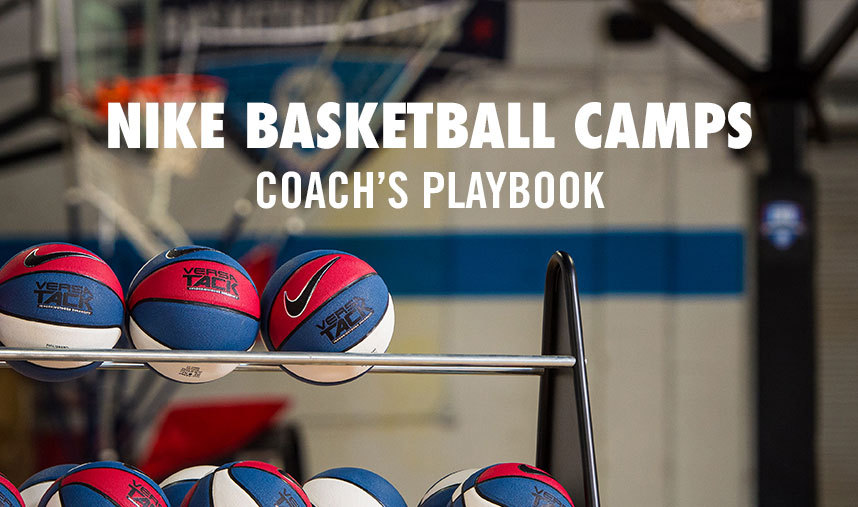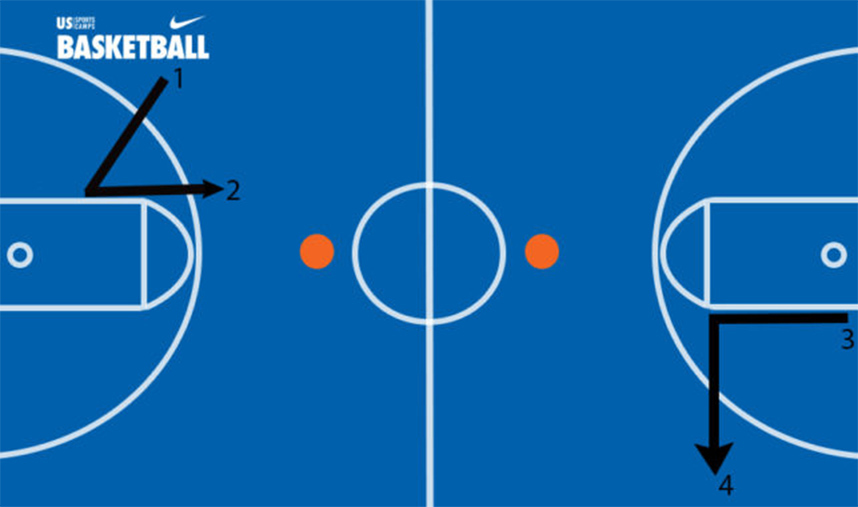Basketball Tip
Coaches PlayBook: V-Cuts and L-Cuts in Basketball

To help your team succeed on offense, they need to know how to get open and ready for the ball which can be tough with thick defensive guarding. One of the most underrated ways to get free is using a cutting in and out movement. Quick, short cuts will create proper spacing in your offense and give you more room to operate, while simultaneously create holes in the defense. Cutting is a very simple concept but must be executed properly for it to work effectively.
Cutting is a tool to use that requires planning, appropriate timing, and quickness. It’s important to read and setup the defender and know where the ball is. Not paying attention to the ball leads to turnovers and lost opportunities. When planning the timing of a cut, the finish should leave the player in an open position ready to receive the ball. The most crucial parts of a cut are changing both speed and direction as fast as possible, utilizing athleticism, and exploding into the new position, all whilst leaving the defender lost and confused. Here are two tips on how to utilize cuts to help your team get open on the offense.

1. V-Cut
The V-Cut is commonly used by wing players during a man-to-man defense when they want to shake a defender around the perimeter. It is most effective when you begin outside of the three-point line.
To begin the drill, (see diagram 1-2), start by positioning a player facing the middle of the court (1), facing the ball (orange circle). Then, have them progress forward to the basket with medium speed, while still looking at the ball. As the player approaches the edge of the cut, have them plant their inside foot, pivot, step off quickly, and explode in the opposite direction as fast as they can (2). The players hands should be up and ready to receive the ball once they arrive outside of the arc.
2. L-Cut
Contrary to the V-Cut, the L-Cut is a great way to generate open space in a location separate from a player’s start point.
To begin this drill, (see diagram 3-4), position a player near the baseline or bottom of the key (3) with a defender on them, looking at the ball (orange circle). The player should start by taking the defender up the side of the key at a moderate speed. Once they hit the free throw line, they should change their speed and pop out to the three-point line (4), ready to receive a pass. Once they have freed themselves and received a pass, they should attempt a shot and play out the drill.
Changing speed is critical. As the players drag the defender out of the lane to the basket, there is a short window of time where this lane will remain open. Changing speed will generate more opportunity to score free of defenders.
These are two drills every coach should have in their playbook and skills players should know. Take advantage of these offensive tips and help take your team to the next level!